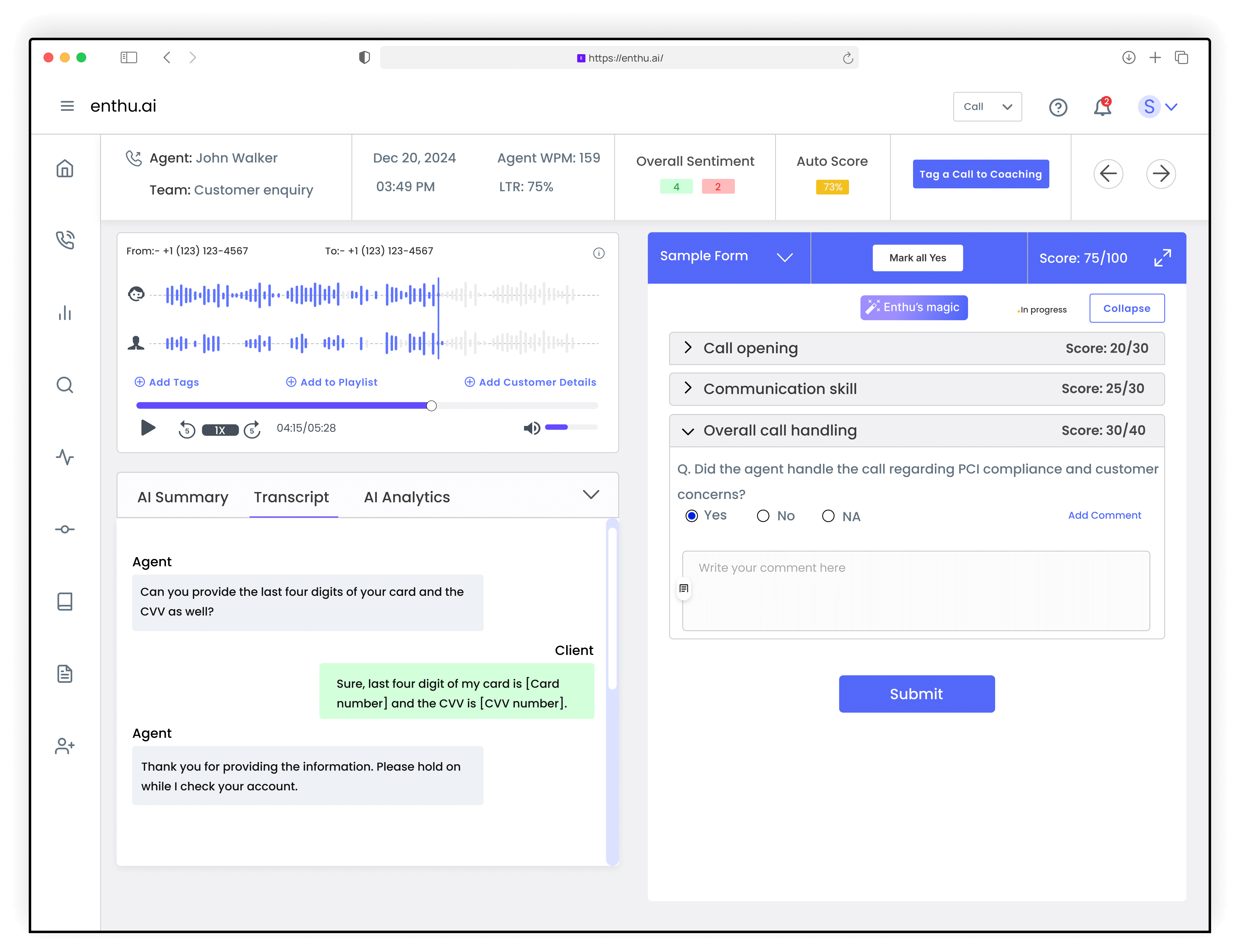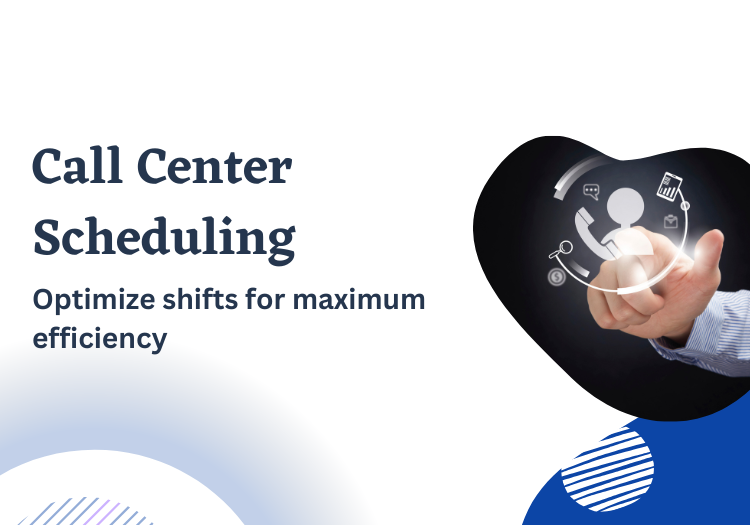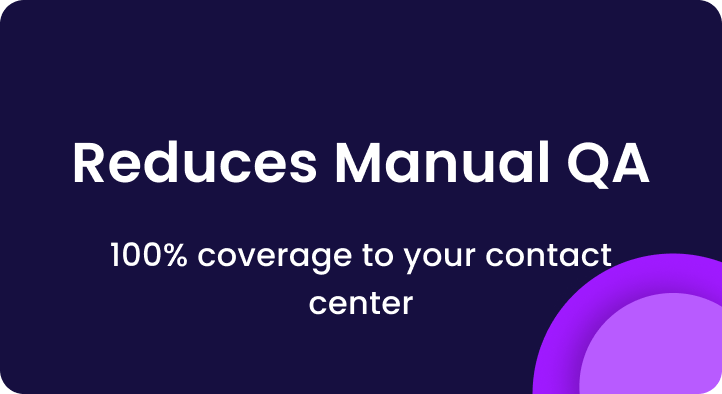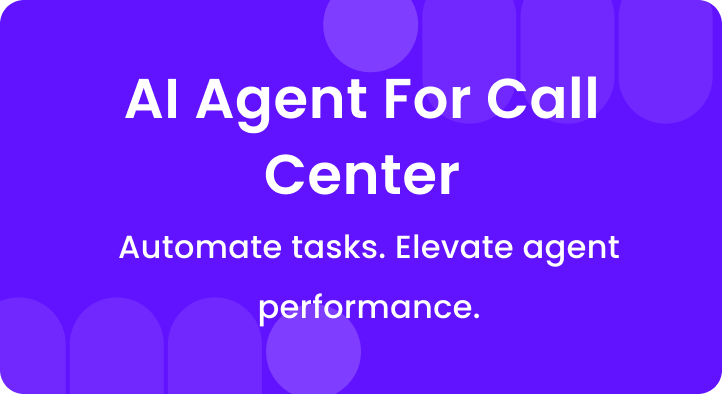What’s the perfect time to call your customers?
It’s simple: when they’re ready to hear from you.
Timing is everything when it comes to customer interactions.
When schedules are off, teams face chaos during peak hours, with long hold times and frustrated customers.
On the flip side, overstaffing during quiet periods wastes resources and eats into profits.
Is there a way to solve this?
Yes, the call center scheduling.
Imagine seamless call center workforce management where every call is met with just the right level of staffing.
Explore the secrets to mastering call center scheduling so you can balance customer satisfaction, employee productivity, and operational costs in your call center.
A. What is call center scheduling?
Call center scheduling is the art and science of getting the right agents in the right place at the right time to handle customer interactions smoothly and efficiently.
It’s not just about filling shifts—it’s about balancing business goals, customer satisfaction, and employee well-being.
At its core, scheduling involves using historical data, predictive analytics, and forecasting to align staffing levels with expected call volumes.
This helps ensure there are enough agents to handle peak times without overstaffing during slower periods. Done well, it keeps wait times short, prevents agent burnout, and optimizes operational costs.
Key factors that influence scheduling include
- Call patterns
- Agent skills
- Time zones
- And even agent preferences or well-being
Modern tools leverage machine learning to refine schedules, improve resource allocation, and track real-time adherence.
They ensure your team stays responsive even when demand fluctuates unexpectedly.
B. How does call center scheduling work?
Call center scheduling isn’t just about filling shifts—it’s about strategically call center shift planning, forecasting, and adjusting to ensure your team is always staffed optimally.
The process involves careful analysis and real-time adjustments, and it typically works in these key steps:
1. Forecasting call volume
The first step in creating an effective schedule is predicting call volumes.
By analyzing historical data, call centers can forecast when they’re most likely to receive high traffic.
Mondays might see more calls than Fridays, or weekends could bring a surge during sales promotions.
Understanding these patterns allows you to prepare for demand spikes.
2. Determining staffing needs
Once you have a forecast, it’s time to figure out how many agents are needed at each time.
This step uses the forecasted call volume to calculate staffing levels required for optimal service.
It takes into account factors like average call handle time (AHT) and how quickly you want to respond to customer inquiries.

3. Creating shift patterns
With a clear understanding of call center staffing needs, You can begin creating an agent shift scheduling system.
This includes determining which hours agents should be working and how to balance shifts across the week.
The goal is to align agent availability with forecasted demand, making sure you’re covered during peak times and have enough downtime during quieter periods.
4. Assigning agents to shifts
Now comes the tactical part: matching agents to the shifts.
You’ll need to consider their skill sets, availability, preferences, and even time zones to ensure you have the right person at the right time.
Distribute workloads evenly, mixing experienced agents with newer ones to maintain both productivity and training.

5. Monitoring adherence and performance
Once the schedules are set, monitoring whether agents are sticking to their shifts is crucial.
Using call center software, managers can track real-time adherence, ensuring agents are available as planned.
If staffing levels are off, they can make adjustments on the fly, like moving agents between shifts or offering overtime.
6. Adapting to real-time changes
Flexibility is key. Even the best-laid plans sometimes need adjustment.
Unexpected surges in call volume, agent absences, or system failures might require you to adapt your staffing levels.
This could involve calling in additional agents, adjusting shifts, or asking employees to work longer hours to meet demand.
C. Importance of call center scheduling
Whether you’re managing a small team or a large enterprise call center, getting scheduling right can make all the difference.
Here’s why:
1. Boosts customer satisfaction

One of the primary goals of call center scheduling is ensuring customers get the help they need, when they need it.
You can minimize wait times and reduce abandoned calls by forecasting call volume and aligning staff accordingly.
Satisfaction levels increase when customers don’t have to wait long for support.
This leads to higher loyalty and better retention rates.
2. Optimizes costs
Effective scheduling ensures you’re not overstaffing or understaffing, which can lead to wasted resources.
When you schedule agents according to predicted demand, you eliminate unnecessary overtime costs and avoid hiring extra staff.
As a result, you optimize labor costs while maintaining service levels, ensuring that you’re not spending more than necessary to meet customer demand.
3. Increases agent morale and retention
Scheduling plays a major role in keeping your agents happy.
Balanced schedules and agent preferences lead to lower stress and burnout, contributing to a positive work environment.
Agents who feel they have some control over their schedules are more likely to stay long-term, reducing turnover and the costs associated with hiring and training new employees.
4. Supports flexibility
Call volume can fluctuate unexpectedly due to seasonal changes, marketing campaigns, or unforeseen circumstances.
Well-designed scheduling allows for quick adjustments to accommodate surges or drops in demand.
Managers can tweak schedules in real-time, keeping the call center responsive without compromising on service quality or employee satisfaction.
5. Enhances performance metrics
When scheduling is done well, it directly impacts key performance indicators (KPIs) like average handle time, first call resolution rates, and customer satisfaction scores.
By ensuring the right agents are scheduled at the right times, you’re better positioned to meet service-level agreements (SLAs) and other performance targets.

6. Decreases agent turnover
Call center turnover is notoriously high, with many agents leaving due to burnout or frustration with rigid schedules.
Scheduling flexibility—like shift swapping and time-off requests—empowers agents and reduces turnover.
Happier, more engaged agents are less likely to leave, so you maintain a more experienced, efficient team.
7. Improves resource utilization
A well-planned schedule ensures that resources—both human and technical resources are maximized.
With effective scheduling, agents are assigned to shifts based on their skills, allowing managers to make sure that the best-suited agent handles every call.
Plus, it helps optimize equipment, such as phones and computers, ensuring your call center is running at full capacity during busy periods.
8. Reduces absenteeism
When employees are given schedules that consider their personal needs and preferences, they’re less likely to take unscheduled time off.
A fair, balanced schedule helps promote a healthy work-life balance, which in turn reduces absenteeism and keeps your team operating smoothly.
D. Best practices to optimize call center scheduling
Effective call center scheduling can be the difference between delivering outstanding customer service and facing frustration on both sides of the phone.
When your schedule is well-optimized, customer wait times drop, agent productivity rises, and your team operates more efficiently.
To help you achieve this, here are 10 best practices that will elevate your call center scheduling game.
1. Leverage automated scheduling tools
Traditional scheduling methods are outdated, error-prone, and time-consuming.
The best way to optimize your call center’s schedule is by using automated scheduling software.
These tools use advanced algorithms to analyze call patterns, agent availability, and skill sets to create schedules that meet your call center’s needs.
With call center automation, you eliminate human error, save time, and ensure that the right agents are scheduled at the right times.
Plus, you get the ability to easily adjust and optimize schedules in real-time based on demand fluctuations.

2. Align scheduling with service level agreements (SLAs)
One of the most important goals for any call center is meeting your Service Level Agreements (SLAs).
These agreements define your team’s performance expectations, such as wait times, response times, and resolution times.
Optimizing your schedule to ensure these benchmarks are consistently met helps maintain customer satisfaction, build trust, and avoid penalties.
By aligning your staffing model with SLAs, you guarantee that your team is always prepared to meet customer needs.
3. Cross-train agents for flexibility
Your call center’s needs will vary, so having a flexible, multi-skilled workforce is a must.
Cross-training agents allow you to easily adjust your schedule in the event of spikes in call volume or staffing shortages.
By equipping your team with the skills to handle different types of calls, you improve overall efficiency and create a backup plan for unforeseen challenges.
Cross-training empowers agents, improves their job satisfaction, and provides management with a broader pool of talent to draw from when creating schedules.
4. Track key performance indicators (KPIs) regularly
To truly optimize your scheduling, you must track KPIs that reflect your call center’s performance.
Metrics like agent occupancy, service levels, average handle time (AHT), and call abandonment rates are vital for understanding staffing needs and call patterns.
Regularly reviewing these KPIs allows you to make data-driven adjustments, ensuring you are always staffing efficiently.
By staying on top of performance metrics, you’ll be able to anticipate trends and optimize schedules in real-time.

5. Incorporate flexible scheduling models
Flexibility is key to improving employee satisfaction and ensuring you have the right people at the right times.
Offering flexible scheduling models such as part-time shifts, compressed workweeks, remote work, or split shifts allows you to adapt to both agent availability and fluctuating call volumes.
This flexibility ensures that agents are happier and more motivated, which in turn boosts productivity and reduces turnover.
Additionally, it helps your call center handle high-demand periods without overburdening your staff.
6. Utilize real-time data for adjustments
Schedules are never set in stone, and real-time data allows you to make immediate adjustments when needed.
Using real-time monitoring and forecasting tools, you can assess call volumes, agent performance, and customer satisfaction throughout the day.
If you notice an increase in calls or wait times, you can adjust schedules by adding agents to queues or reallocating resources.
Predictive analytics also helps forecast demand, ensuring your team is prepared before the rush begins.
7. Prioritize agent well-being and work-life balance
A well-rested agent is a productive agent.
You create a happier, more motivated workforce by designing schedules that cater to your agents’ preferences—such as offering remote work options, providing ample time for breaks, and ensuring shifts are posted well in advance.
Providing opportunities for shift swapping, ensuring predictable schedules, and accommodating personal commitments enhances agent satisfaction, which directly impacts their performance and the overall customer experience.
8. Schedule top performers for peak times
Your best agents should be available when your customers need them most.
You ensure that customer service quality stays high by identifying top performers and scheduling them during peak hours or high-demand periods.
Top agents often have superior skills in managing complex queries or defusing high-tension situations, making them invaluable during busy times.
Recognize and reward high performers by scheduling them at critical intervals to optimize your service levels.
9. Streamline scheduling with integrated technology
Integrating your scheduling software with other essential systems like Customer Relationship Management (CRM) tools, workforce management (WFM) software, and communication platforms helps streamline the process.
Seamless data exchange between these systems enables better forecasting, more accurate scheduling, and real-time decision-making.
The integration of technology eliminates manual work, reduces errors, and ensures that all systems are aligned for maximum efficiency.
10. Continuously review and improve scheduling processes
Lastly, optimizing call center scheduling isn’t a one-time task; it requires ongoing assessment and refinement.
Call centers are dynamic, and scheduling needs will evolve over time.
Regularly reviewing your schedules, analyzing performance data, and soliciting agent feedback help you identify improvement areas.
By experimenting with different scheduling approaches, adjusting for shifts in call volume, and continuously upgrading your technology and processes, you’ll ensure that your scheduling practices remain effective and sustainable in the long run.
E. Unlock the power of quality assurance (QA) to optimize Your call center scheduling
Imagine a call center where your agents are perfectly aligned with customer demand, performance is at its peak, and every shift is seamlessly scheduled for maximum efficiency.
The key to achieving this lies in one powerful tool: Quality Assurance (QA).
By leveraging metrics, strategically placing your top performers at peak times, prioritizing agent well-being, and using predictive data to forecast call volumes, you can revolutionize your scheduling strategy and enhance both agent performance and customer satisfaction.
But how do you gather and analyze this vital data?
The answer lies in a purpose-built quality assurance solution.
With the right QA tools, you can track agent performance and gather actionable insights that allow for smarter, data-driven scheduling decisions.
These tools help you identify gaps, uncover trends, and adjust your schedules to match demand—all in real-time. Plus, modern QA software accelerates evaluations and reporting, giving you more time to focus on refining your call center operations.
Enthu.AI is an advanced call center QA platform that takes scheduling optimization to the next level. Powered by AI, it offers 100% interaction analysis, integrated coaching, real-time call monitoring, speech analytics, and more, all designed to provide you with the insights you need for better scheduling decisions.
Ready to transform your call center operations?
Conclusion
Ultimately, mastering call center scheduling isn’t just about numbers and algorithms—it’s about creating a seamless experience for both your customers and your team.
When you get the right people in the right place at the right time, everyone benefits: your agents feel valued, your customers get the service they expect, and your business runs more efficiently.
Investing in the right tools and practices now can help you future-proof your call center operations and set the stage for long-term success.
If you have any doubts, let us know – we’re here to help you optimize your call center scheduling and take your operations to the next level!
FAQs
1. What is the best schedule for a call center?
The best schedule for a call center balances staffing levels with expected call volumes, considering peak hours, agent availability, and agent well-being to maintain optimal service without overstaffing.
2. What is call center scheduling?
Call center scheduling involves strategically assigning agents to shifts based on predicted call volumes, historical data, and real-time adjustments to meet customer demand efficiently.
3. How many calls per day in a call center?
The number of calls per day in a call center depends on the size of the team, call volume forecasts, and business type, but typically ranges from hundreds to thousands of calls daily.



 On this page
On this page

